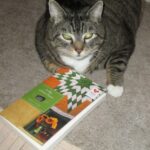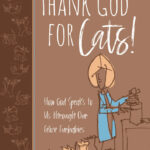
The fire to write can be inspirational. But do you know who your readers are?
Writing Tip for Today: Defining your readership sounds easy enough—we want everyone to read our stuff. But dig a little deeper to find your audience with these easy tips:
Genre Benders
I see student work that claims to be part one type of book and part a different genre. While it’s true that some writers are successful at combining genres—think books such as Cloud Atlas by David Mitchell—more often I see manuscripts that really don’t know what they want to be.
Writing coaches often ask students to picture where in a bookstore a reader might locate the book. If you can’t do this easily, you might need to re-evaluate your message. If you have a hard time identifying the type of book you’re writing, chances are high that you’ve tried to herd cats. That is, different ideas are competing with each other rather than complementing each other.
Take a few moments and think about your ideal reader. What kind of books do they gravitate toward? Who are their favorite authors? Then be ready to pitch your work as appealing to such-and-such readers or those interested in a category (genre) such as romance, sci-fi-or literary.
Illuminate, not Educate
Another way to understand your potential readers is by ensuring that your aim is to illuminate rather than educate. Many writers have a little preacher in them, and because they know a lot about a subject, want to include every detail in their fiction.
In novel or memoir writing especially, avoid info dumping as a way to keep readers engaged. Unless you’re a celebrity, few want to learn about the chronicle of your life—unless it’s told with a compelling arc and narrative.
Even with non-fiction, strive to illuminate—that is, give readers stories that show the facts instead of telling them. Anecdotes (short snippets of story) can go a long way toward giving readers a chance to ponder, question and arrive at their own conclusions.
Construct a jury of twelve ideal readers and write to them.
Comparison is Good
A book that follows a classic story arc leaves readers asking for more. Study successful books to better understand the elements that authors use to engage readers and write to that same audience. Ask yourself what motivates an author’s readers to come back again and again. How does your book compare to a certain genre or author? Read that author to get a feel for how you can capture a piece of that readership.
Another technique is to construct a jury of twelve. Which persons would you most love to please? Write to those twelve people. Check in with your jury from time to time as you write, allowing the twelve to let you know if your prose veers off course.
Start a newsletter or blog to gauge your readers’ interest. Be consistent about posting, grow your email list and stay in your chosen genre as much as possible. Sure, you want to be unique, write your own truth and continually hone your craft. But all writers must share the readership pie. Apply your writing to attract loyal readers who help you spread the word about your work.






As always right on time! Thank you Linda, this is so helpful!
Eve,
I’m glad to help. Not enough writers think of their readers as they write. it matters!
Keep Writing,
Linda